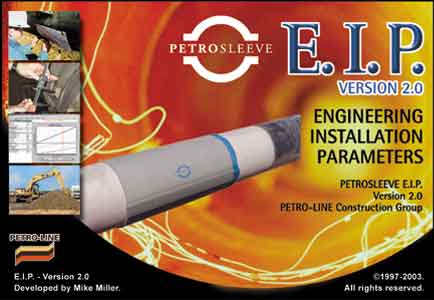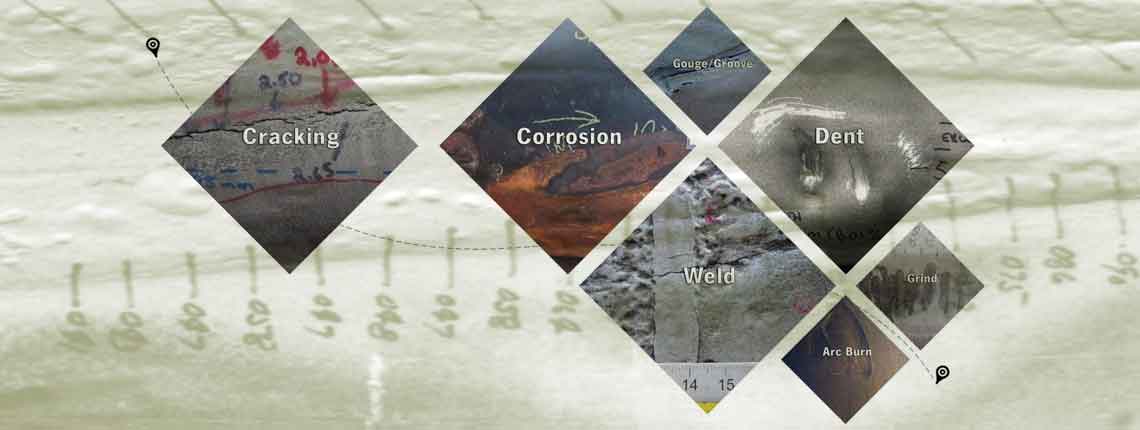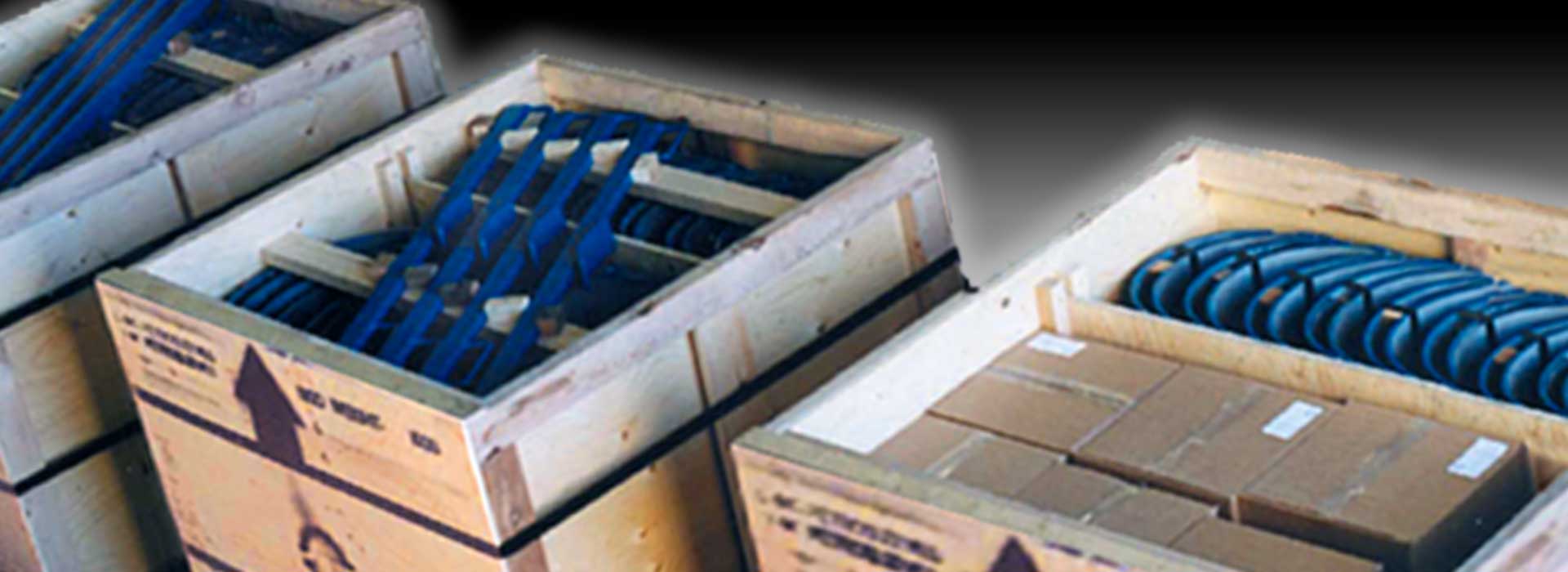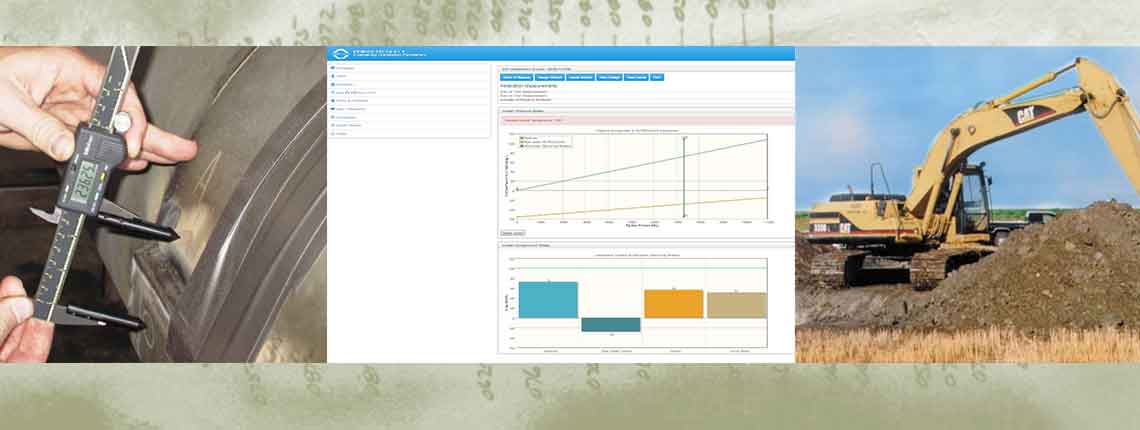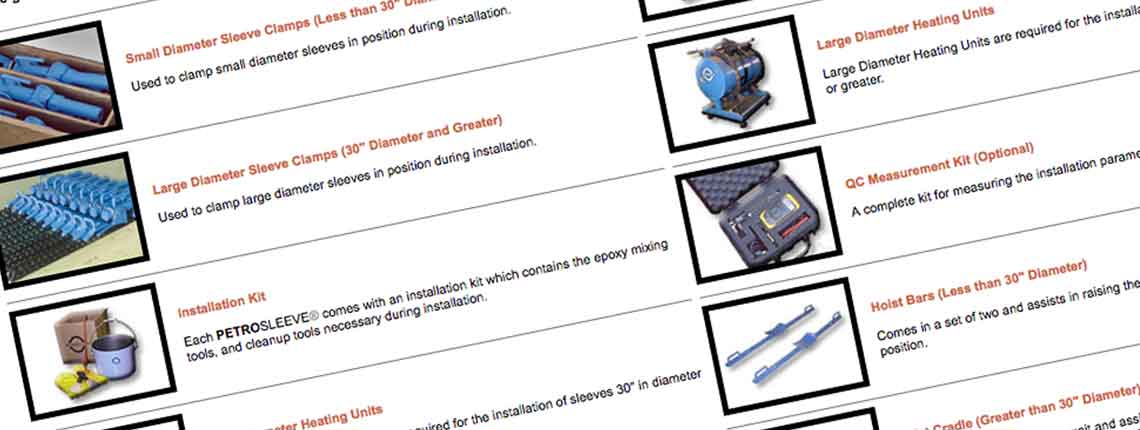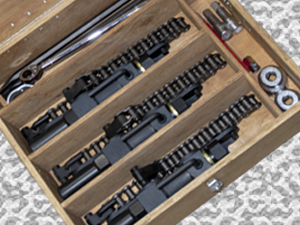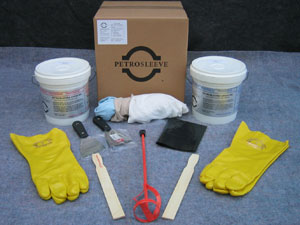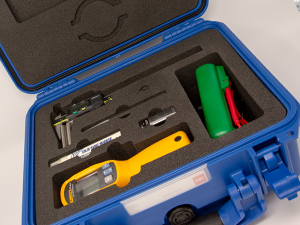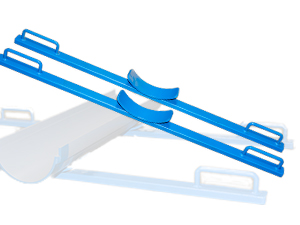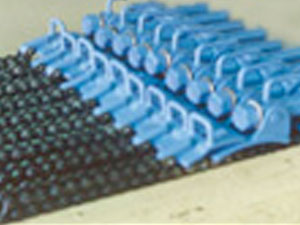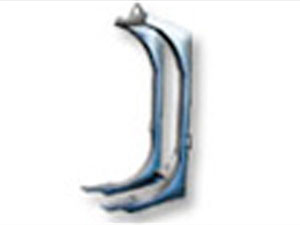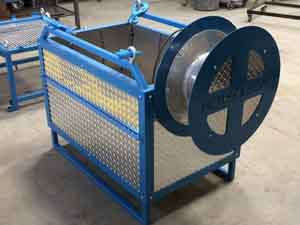PETROSLEEVE
The PETROSLEEVE® is a permanent, non-intrusive Repair System that is easy for any crew to perform. The carrier pipe is cleaned, epoxy applied, PETROSLEEVE® assembled and compressed, and then the PETROSLEEVE® is welded together... all in about an hour.
Quality Assurance: The PETROSLEEVE® is tested and validated as a permanent pipe repair. The PETROSLEEVE® is the only pipe repair, short of defect removal, that repairs cracking, and it does not require welding to the pipeline. Additionally, each PETROSLEEVE® installation is verified using quality control procedures in association with our complimentary Analysis/Documentation EIP software. The PETROSLEEVE®:
- Maintains constant compression on the carrier pipe and never disbonds from the pipeline
- Permanently restores the integrity of the pipe
- Alleviates concerns related to high CE, thin wall, and high strength steels (X70+) that are difficult to in-service weld
- Installs in all weather conditions
- Permanently repairs defects, arresting any defect growth
- Interference fit ensures steel to steel contact, which will allow the pipeline’s corrosion protection system (e.g. cathodic protection) to also protect the PETROSLEEVE®
How It Works - Defect Repair Details
The PETROSLEEVE® successfully applies compressive forces to both the pipe and the defect. First, the sleeve’s compressive forces contain the expansion of the pipe under pressure. Second, the sleeve’s compressive forces place the repair area into compression for all operating ranges. Simply put, an installed PETROSLEEVE® keeps the pipeline in a compressive state, eliminating any possibility of defect failure. A PETROSLEEVE® installation:
- Reinforces the pipeline defect area, essentially creating a heavy wall section
- Ensures that defects (even Stress Concentrator defects) cannot grow
- Overcomes pipeline expansion from pipeline operational forces
- Prevents separation between the PETROSLEEVE® and pipeline within all pipeline operating ranges. The pipe and PETROSLEEVE® move and act as a single unit.
- Transfers stress from the pipe to the PETROSLEEVE®
- Confirms integrity of the repair through reporting, QA and site validation
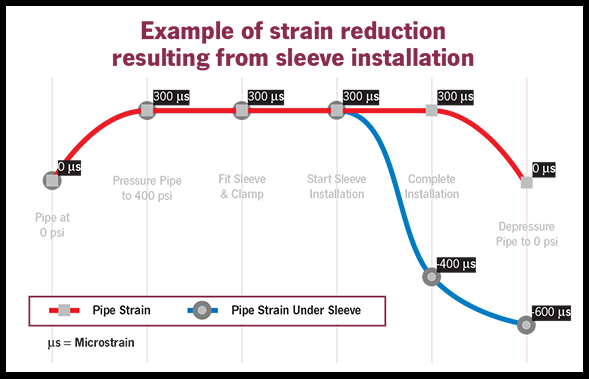
The PETROSLEEVE® delivers defect repair for Seam or Pipe Body Cracking, Corrosion, Dents, Mechanical Defects, SCC (Stress Corrosion Cracking), Manufacturing Defects, and Arc Burns. Although the failure mechanism varies for each defect type, the following provides a general overview of how the PETROSLEEVE® permanently removes the respective failure mechanisms:
DEFECT REPAIR DETAILS

Cracking
Pipe Body Cracking is caused by various means, including chemical action (Stress Corrosion Cracking). Seam Cracking occurs when anomalies in the seam act much like a pipe body crack. Failure occurs when the crack becomes unstable and the pipe wall can no longer resist the crack growth.
The installation of a PETROSLEEVE® permanently reduces the stress state in the material surrounding the defect, eliminating the possibility of crack extension

Corrosion
Corrosion defects are caused by a chemical reduction action on the surface of the pipe material, resulting in localized thinning of the pipe wall. Failure occurs first by bulging (yielding) at the corrosion site, followed by rupture of the steel membrane.
The installation of a PETROSLEEVE® provides mechanical support to the localized thinned section. It is this support that prevents bulging for all pressures, including during high pressure testing.
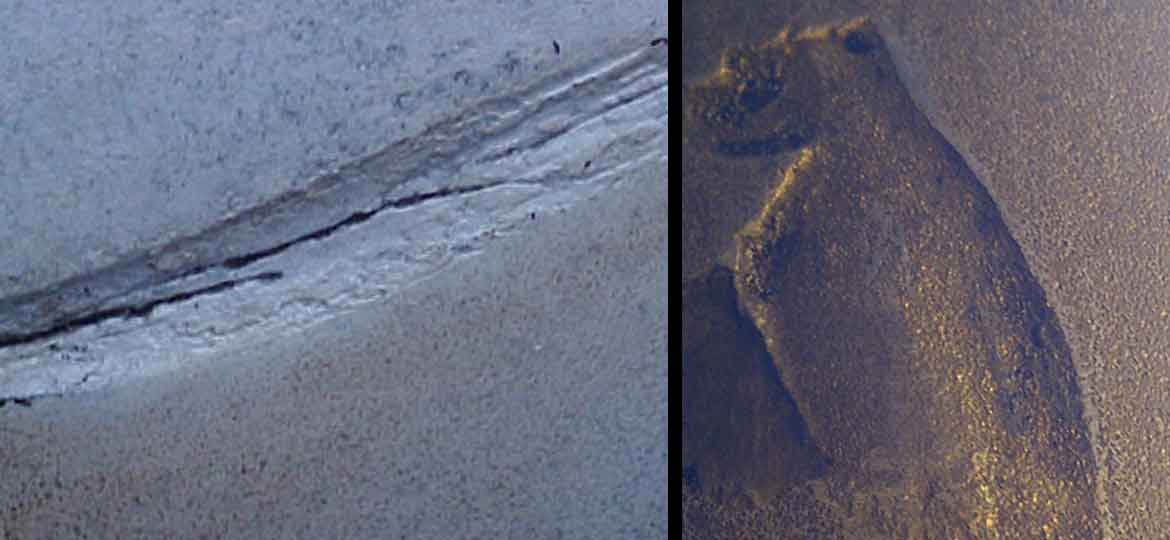
Gouge, Groove or Arc Burn
These defects are caused by either third-party damage or non-acceptable workmanship, and may develop stress concentrators such as cracking anomalies due to higher stress levels in the pipeline. Failure occurs by the pipe material containing the defect flexing from internal pressure variances, which in turn causes cracking. When the crack extensions become critical, rupture occurs.
The installation of a PETROSLEEVE® eliminates flexing in the pipe material and the stress state in the material surrounding the defect is put into compression. This eliminates fatigue, crack extension, and rupture.
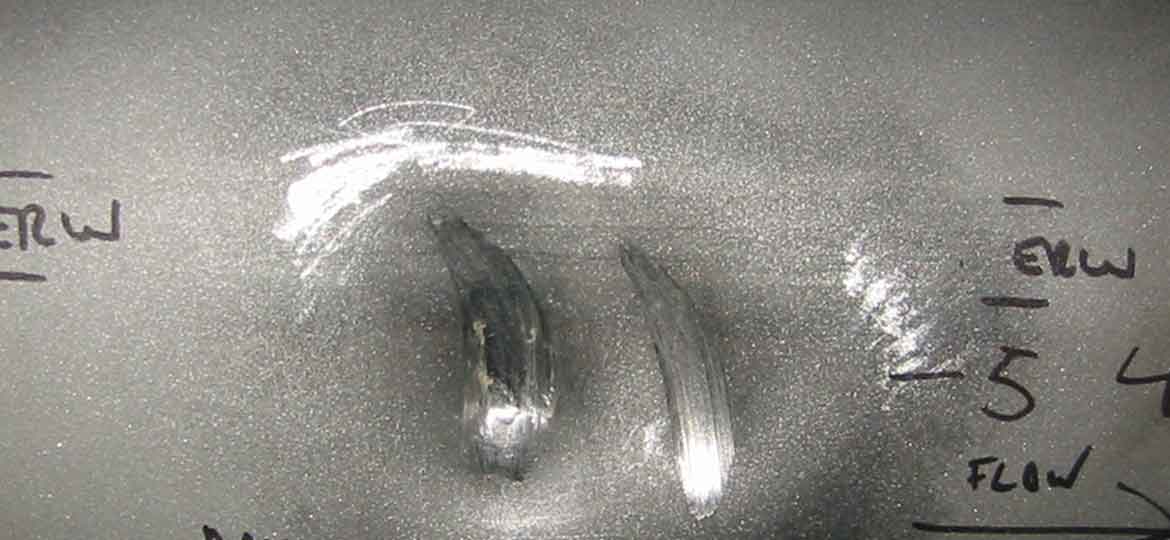
Dent
Dent defects are caused by either third party damage, unforeseen underground rocks/obstructions or poor backfill and/or excavation practices. As in a gouge, groove or arc burn defect cases, failure occurs when the pipe material containing the defect flexes during internal pressure variances. This flexing causes cracking and when crack extensions become critical, rupture occurs.
The installation of a PETROSLEEVE® permanently locks the dent deformation of the dent shape into place. This prevents flexing in the pipe material dent shoulders by placing the pipe material into compression and consequently eliminates fatigue, crack extension, and rupture.

Girth Weld
Girth weld defects are caused by poor workmanship. Failure occurs when the strength of the weld is not sufficient to counteract the applied forces.
The installation of a PETROSLEEVE® permanently reduces the stress state in the material surrounding the defect, as well as providing support to the weld. The PETROSLEEVE® provides permanent mechanical support to the weld area and reduces the strain induced in the weld by the external forces.
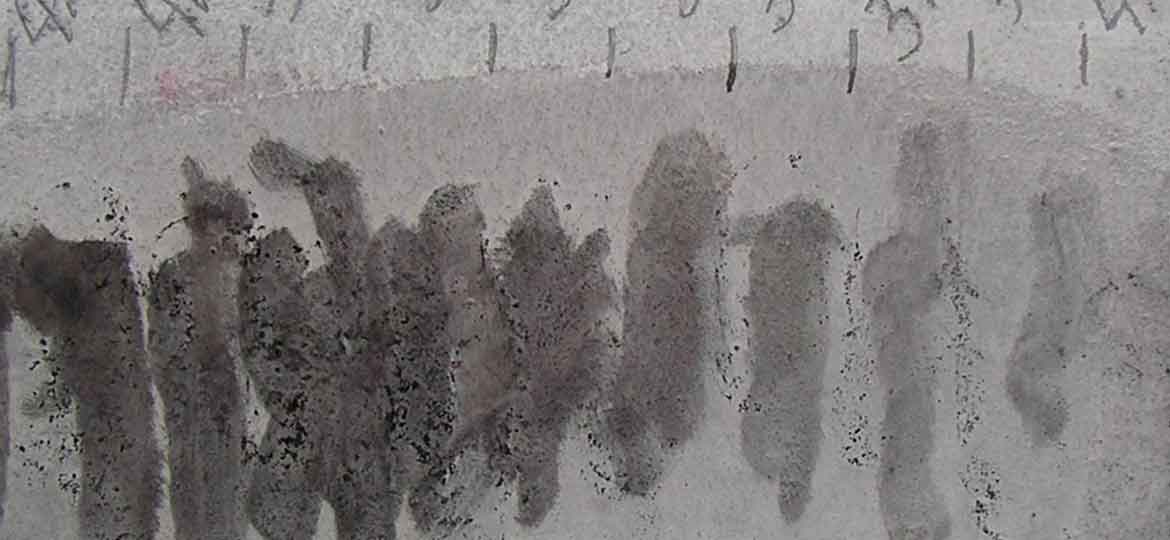
Grind Defect
A grind defect is caused by mechanically removing metal from the surface of the pipe material that results in localized thinning of the pipe wall. In addition, stress concentrators could be present on the metal surface. Failure occurs first by bulging (yielding) at the grinding area, followed by rupture of the steel membrane. Further, the presence of stress concentrators may act as initiation points for rupture at lower strain levels.
The installation of a PETROSLEEVE® prevents bulging by permanently providing mechanical support to the localized thinned section. The sleeve also eliminates metal movement (fatigue), and reduces the strain induced in the material by the external forces.

Manufacturing
Manufacturing defects are those that are introduced during the pipe manufacturing process. These can form part of the body of the pipe or within the seam weld. These defects can include but not be limited to dents, scars, gouges, cracks, laminations or welding defects. Manufacturing defects can be repaired with the use of the PETROSLEEVE® Pipeline Repair System depending on the type of defect and applied defect principles described above.
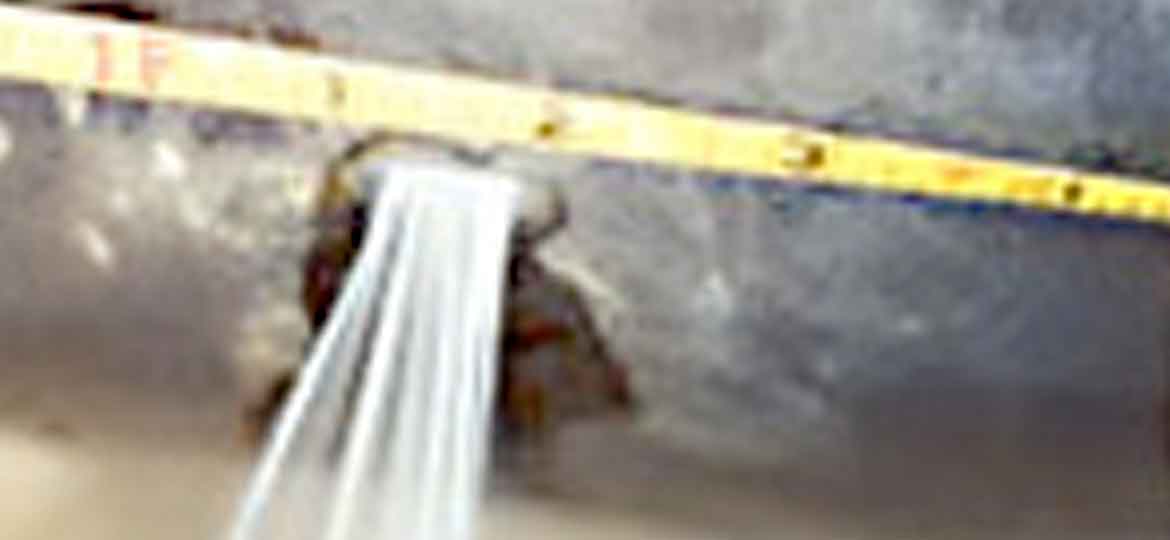
Leaking/Through-wall
A leak occurs when a defect in the pipe wall allows the pipeline contents to escape while the pipe wall continues to contain the internal pressure, preventing a rupture from occurring. Active internal and/or external corrosion will proceed through the wall of the pipeline if left unmitigated. A leak may also be a result of anomalies from pipe manufacturing or welding.
Although testing and research in a controlled setting has proven that the installation of a PETROSLEEVE® is effective in preventing a through-wall from leaking beyond the sleeved area, the PETROSLEEVE® has not been approved for use on these defect types at this time.
Specifications - Overview
- • Diameter Range successfully manufactured and installed to date: NPS 2 (60.3mm) to NPS 48 (1524mm) – diameters outside this range can be designed.
- • PETROSLEEVE® Thickness Range: the thickness of the PETROSLEEVE® varies and is typically designed in conjunction to the diameter, grade and installation objectives to have a minimum load carrying capacity of the repair pipe location.
- • PETROSLEEVE® Length: 36″ (914mm) maximum. Adjacent installations are added to reach desired repair length.
- • Sleeve Material: The strength of the steel material, in conjunction with the sleeve thickness, is designed to meet the pressure carrying capability of the pipeline.
- • Epoxy: High Strength, High Modulus, Moisture Insensitive, High Bond Epoxy is specially designed to cure and perform at pipeline operating temperatures.
- • Pipeline Material: The PETROSLEEVE® is designed to repair typical pipeline grade carbon steel material.
- • Installation Pressure Range: The pipeline can remain in operation during installation. The installation parameters may vary depending on the pipeline specifications and the internal pipe pressure at the repair location. Pressure limitations may be required during the installation of a large diameter PETROSLEEVE® depending on the pipeline and defect specifications.
- • Pipeline Temperature Range: The PETROSLEEVE® is designed to repair pipelines operating between 0ᵒC (32ᵒF) to 50ᵒC (122ᵒF). Specific engineering designs may be applicable for temperatures outside this range.
- • Safety: The installation process of a PETROSLEEVE® is designed to reduce the risks and hazards commonly associated with conventional repair methods.
- • Pipeline Products: PETROSLEEVE® installations are made on (but are not limited to) steel pipelines carrying Crude Oil, Natural Gas, Sour Natural Gas, Fresh Water, Fuel Gas, HVP Products (butane, ethylene, propane, pentane, liquid ethane), LVP Products (condensate diesel fuel, gasoline, heating oil, hydrocarbon diluents, kerosene, solvents), Misc. Gases, Misc. Liquids, Oil Well Effluent, Salt Water.
- • Pipeline Preparation: Pipeline should be grit blasted to remove all foreign material.
- • Final Sleeve Protection: Sleeve can be coated with a number of industry acceptable coatings. Conductivity can be checked to ensure cathodic protection continuity to the PETROSLEEVE®. Pipe and sleeve surface preparation should follow coating manufacturer specifications.
- • Installation Equipment: Portable equipment is easily transported for remote installations
Specifications - SIZES
- • < NPS 30: small diameter installation requiring small diameter installation tools and procedures.
- • ≥ NPS 30: large diameter installation requiring large diameter installation tools and procedures.
Specifications - DESIGN
- • Manufacturing: The PETROSLEEVE® is manufactured to strict tolerance standards with quality control verification. These standards ensure that the PETROSLEEVE® is ready to be installed with little or no field modifications.
- • Engineered design and installation tools.
- • Defects Repaired: Permanent repair of all minor and severe defect types.
- • Strength of Repair: The PETROSLEEVE® provides equal or greater strength than the original pipeline material.
- • Quality Assurance: Following the installation of a PETROSLEEVE®, Quality Assurance procedures are used in conjunction with the installation data to determine the post installation stress conditions for the pipeline and sleeve components.
- • Extensively Tested: Since the 1990s, a multitude of formally documented laboratory and field tests have confirmed and proven the effectiveness of the PETROSLEEVE® Pipeline Repair System. In addition, several independent engineering evaluations have confirmed the scientific and mathematical theories used in the design.
- • Long Term Expectancy: Severe long term fatigue cyclic testing has confirmed and proven the PETROSLEEVE® Pipeline Repair System’s reliability. The PETROSLEEVE® has been field proven with over 30,000+ field installations without a single failure.
- • Pipeline Operating Conditions: the PETROSLEEVE® has been installed on a variety of pipeline operating conditions.
- • Detailed & Robust Installation procedure as part of the design.
- • The PETROSLEEVE® Repair System has been designed as a safe, low risk, fast pipeline repair method.
Manufacturing Quality Control
EIP (Engineering Installation Parameters)
The PETROSLEEVE® Pipeline Repair System has complimentary, secure analysis/documentation software available in both web based and iOS app versions. Each PETROSLEEVE® installation is validated by trained Certified Installers using our proprietary E.I.P. program, ensuring quality control throughout the installation process.
The PETROSLEEVE® Pipeline Repair System delivers the unique ability to field model the stress conditions of the repaired pipe, for all pressure ranges, immediately after a repair is completed.
ONLINE EIP Computer Model
The EIP (Engineering Installation Parameters) program is an online computer model that enables you to clearly define installation criteria prior to installation. After the installation is performed, the software then allows you to model the stress conditions of the completed repair to ensure that you have successfully achieved your repair objectives.
Your EIP Software assists you to:
- Design a PETROSLEEVE® installation
- Determine installation parameters
- Evaluate your completed Installation, and
- Download a PDF report of the completed Installation
The EIP Software provides you with a guide for installation and a data review of the achieved final repair situation.
